
Review
A Song on the Pequod: On ABLAR HA DEFESIOS, HABLAR ADEFESIOS, DEFESIOS ABLAR HA
by Mariel Vela
Reading time
6 min
When I searched the internet for the address of Pequod & Co, I arrived at Nantucket, the port from which the crew sailed in the novel Moby Dick. Some centuries later, an art gallery took up the same name—the whaler is now contemporary—and opened its doors at #29 Calle Lancaster, in Colonia Juárez. The invitation to its new exhibition was made by means of a video suggesting the need to express an urgent message in red, in spasmatic communications delivered by a female voice. Her official intonation makes it almost impossible to notice how the sentences she pronounces begin, little by little, to be grammatically disfigured, while they summon us to attend a failed staging, to witness a parasite of crisis. After so many months without seeing an exhibition, I was moved by the promise of a multivalent exchange of contemporary rigor.*1
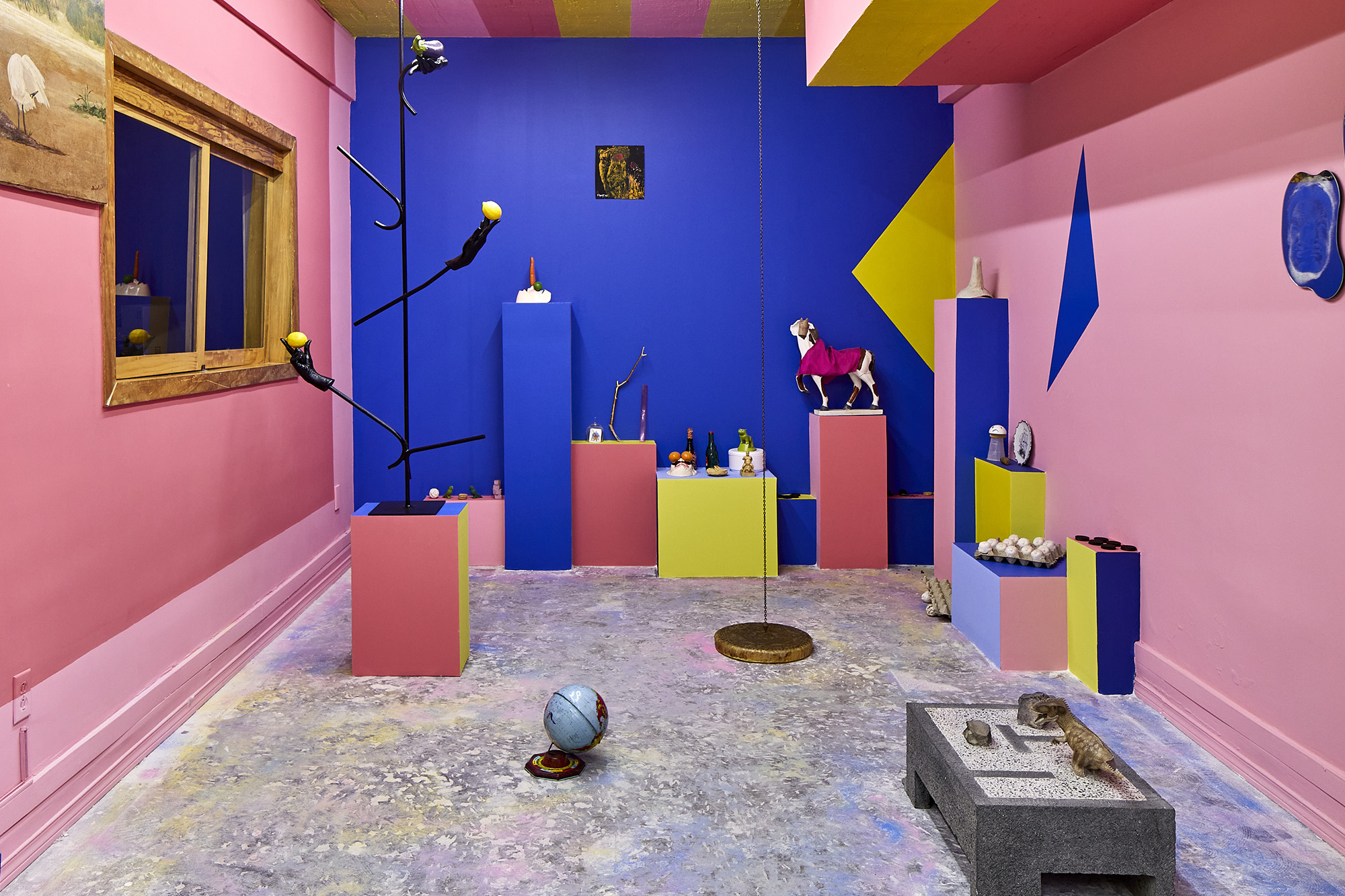
ABLAR HA DEFESIOS, HABLAR ADEFESIOS, DEFESIOS ABLAR HA is an e̶x̶h̶i̶b̶i̶t̶i̶o̶n̶ collective invocation by Víctor Palacios in which the following a̶r̶t̶i̶s̶t̶s̶ interpreters participate: José Luis Sánchez Rull, Pilar Villela, Jippies Asquerosos, Cristian Franco, Ana Navas, Bruno Gruppalli, Juan Kraeppellin, Todos a cubierta (a summoning?), Louise A. Griselle Thomas, Raúl Rueda, Mauricio Limón, Els Maññaññiere & Diego Martínez, Juan Manuel Salas, Sebastián Romo, Valerio Ruscelli Parnetti (Aureato), Jesús Cruz Caba, Victoria Núñez Estrada, Enrique Arriaga, Gnixel Sepiaw, and Diego Pérez. All of them appear under the unifying title of Palacios Orchestra. The curatorial text mutates every week, operating as a sonic reverberation of what takes place inside Pequod & Co.
If the monsters spoke what would they say? I think that every collective exhibition is already in itself a kind of creature: an inanity, an absurdity, an extravagance.
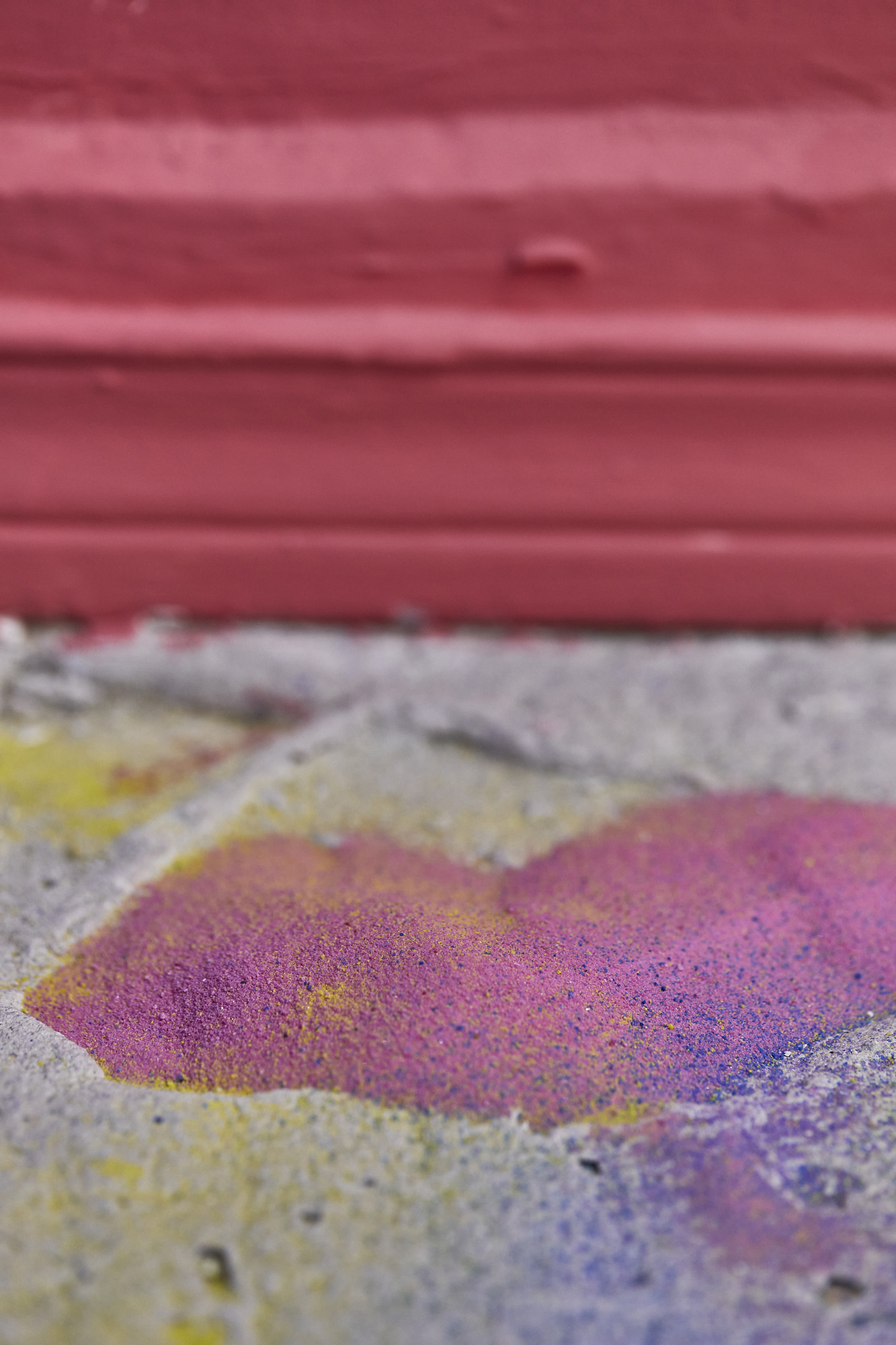
Upon entering the gallery, colors come first. They almost ring. The walls are painted from floor to ceiling with yellow, pink, and blue. In the background is Bruno Grupalli’s piece titled Prefiero convertirme en hipopótamo (“I’d Rather Become a Hippopotamus”), imperceptible until the sand dyed in the same tones is crunched under the soles of one’s shoes. Paulina Félix, the gallery manager, led us to a mysterious room in which she several times pressed a button next to the piece by Jippies Asquerosos: Ceci n'est pas une roue de bicyclette, c'est une boîte de carton. The cardboard box gave off a red mist that flooded the carpeted room until one couldn’t see out the window. A real smokescreen. Upon exiting I see the ruins of some Oreo cookies and I wonder if someone has indeed bitten them or whether they were just carefully torn to pieces with their hands: the kinds of actions that are only performed in the name of contemporary art, pretending that cookies have been chewed.
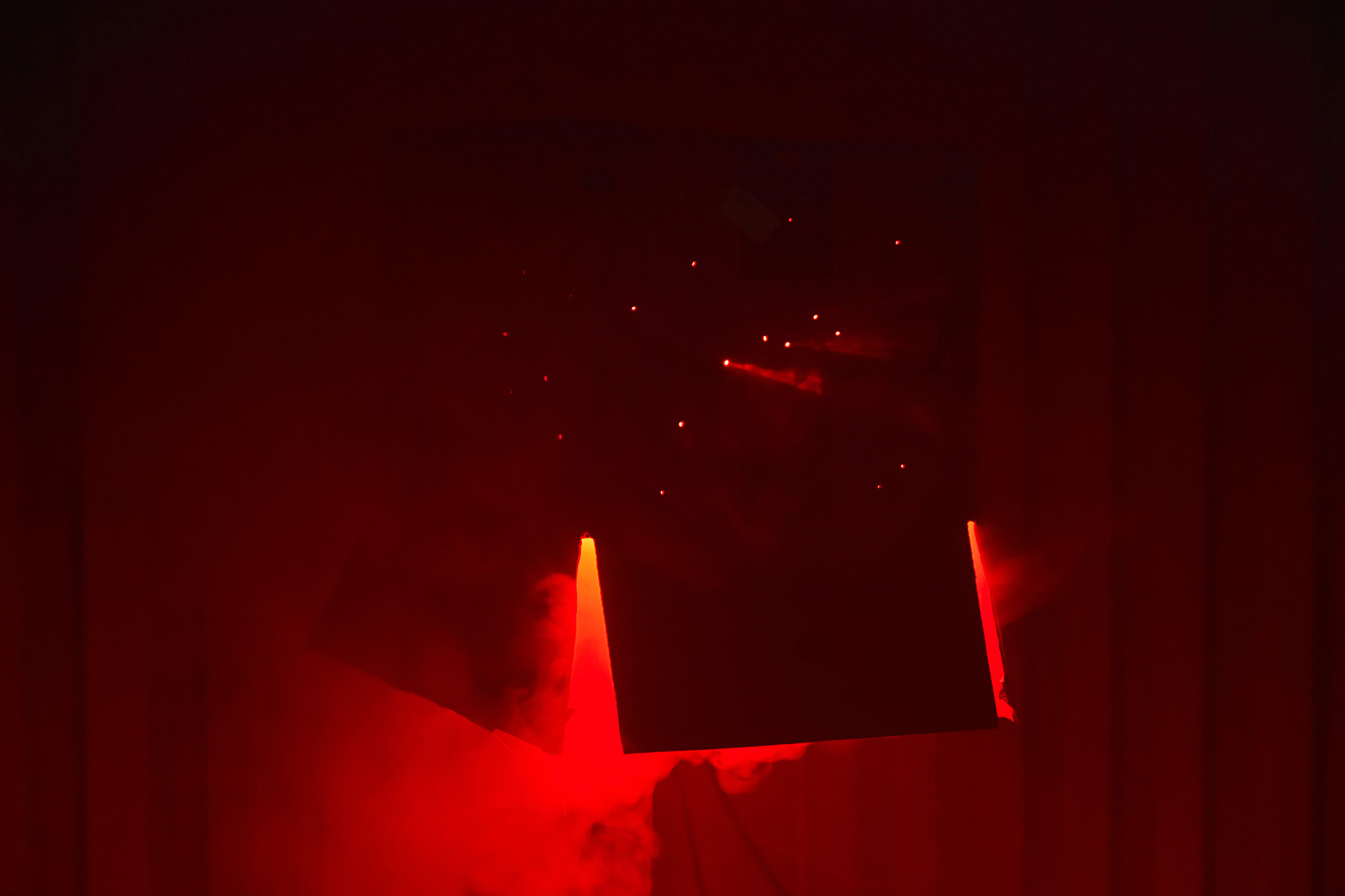
.jpg?alt=media&token=c07965c0-bb4c-4cf2-88f5-7eb2fa5d02fa)
One of the first images of the tour is No es cierto que el artista sólo diga algo después de muerto. Pero tal vez es cierto que un artista muerto sea mejor que uno vivo... (“It’s not true that the artist only says something after death. But maybe it’s true that a dead artist is better than a living one”). A narrowed-down declaration of what is in general a small poem that the artist Jose Luis Sánchez Rull uses as the title for his pieces. The oil painting shows a man bearing a large plume, a punk god holding a woman’s shrunken head like a bouquet of flowers. There are also the 45 extremely sinister tiny heads (INHUMACIÓNES ¡Huevos de alguien! [“INHUMATIONS Someone’s eggs!”]) arranged in a carton. Others are leaning against the wall, with their eyes closed, looking out at nothing.
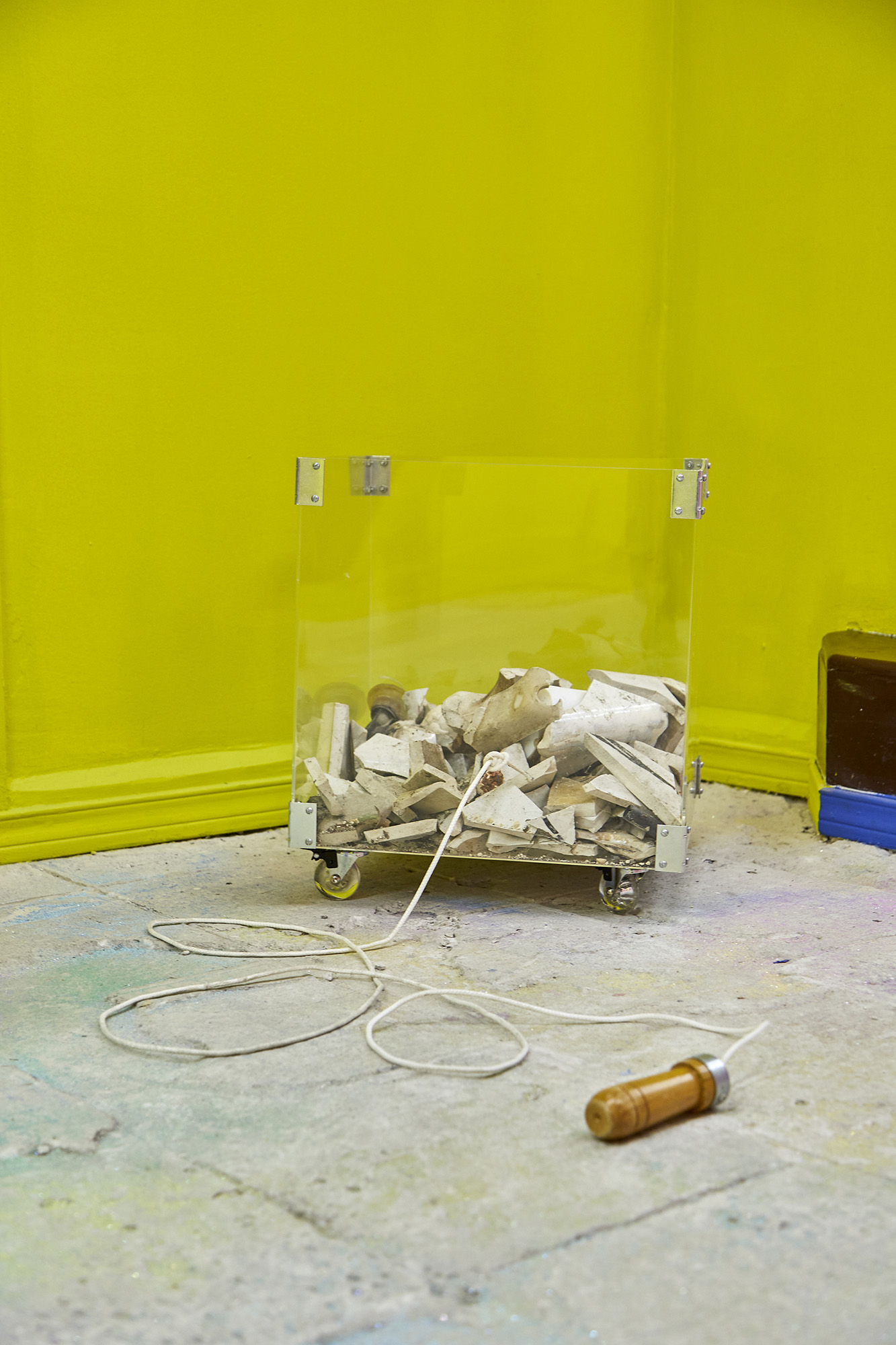
ABLAR HA DEFESIOS has some dark but very beautiful moments, such as Abrazos de vainilla mascullar (“Vanilla Hugs Mumble”) by Victoria Núñez Estrada, which reminded me of a mountain of stacked bones. It’s an acrylic box filled with ceramic toilet debris mixed with dirt, giving off a synthetic vanilla aroma. This piece whispers something between its teeth, and I feel it to be in absolute correspondence with the text printed on tracing paper by Raúl Rueda, titled Tomar los cuernos por el toro (“Taking the Horns for the Bull”). What’s striking in the statement is a sentence evoking another kind of sound: la melódica nota de la cerámica que su puente dental hizo al chocar contra el asfalto (“the melodic note of ceramic that their dental bridge made upon hitting the asphalt”). This is a small fiction—or perhaps an instruction—encouraging the correct attitude to participating in nonsense. It provokes desires of becoming a motorcycle.
The combination of wood, enamel, wind chimes, (rabbit) bones, and studs is very punk, although the name borne by Cristian Franco’s work is more sentimental: Se anda tirando a mi novia (“He’s fucking my girlfriend”). A frank and perhaps somewhat sad complaint is emitted from the immobility of two bells located at the ends of a board. There’s no wind blowing on them inside the gallery. When I found out about the rabbit bones, I began to notice the fauna in the exhibition. There’s a pair of green parrots titled Tropicalia negra and a Cachazorro by Atelier Romo. Both of these coexist with Louise A. Griselle Thomas’s sleeping heron painted against a golden background in a moment of silence. The gallop of miniature horses on textile in Diego Pérez’s The days go by like wild horses over the hills is practically a Western. Who fired shots so that the birds would fly like this?
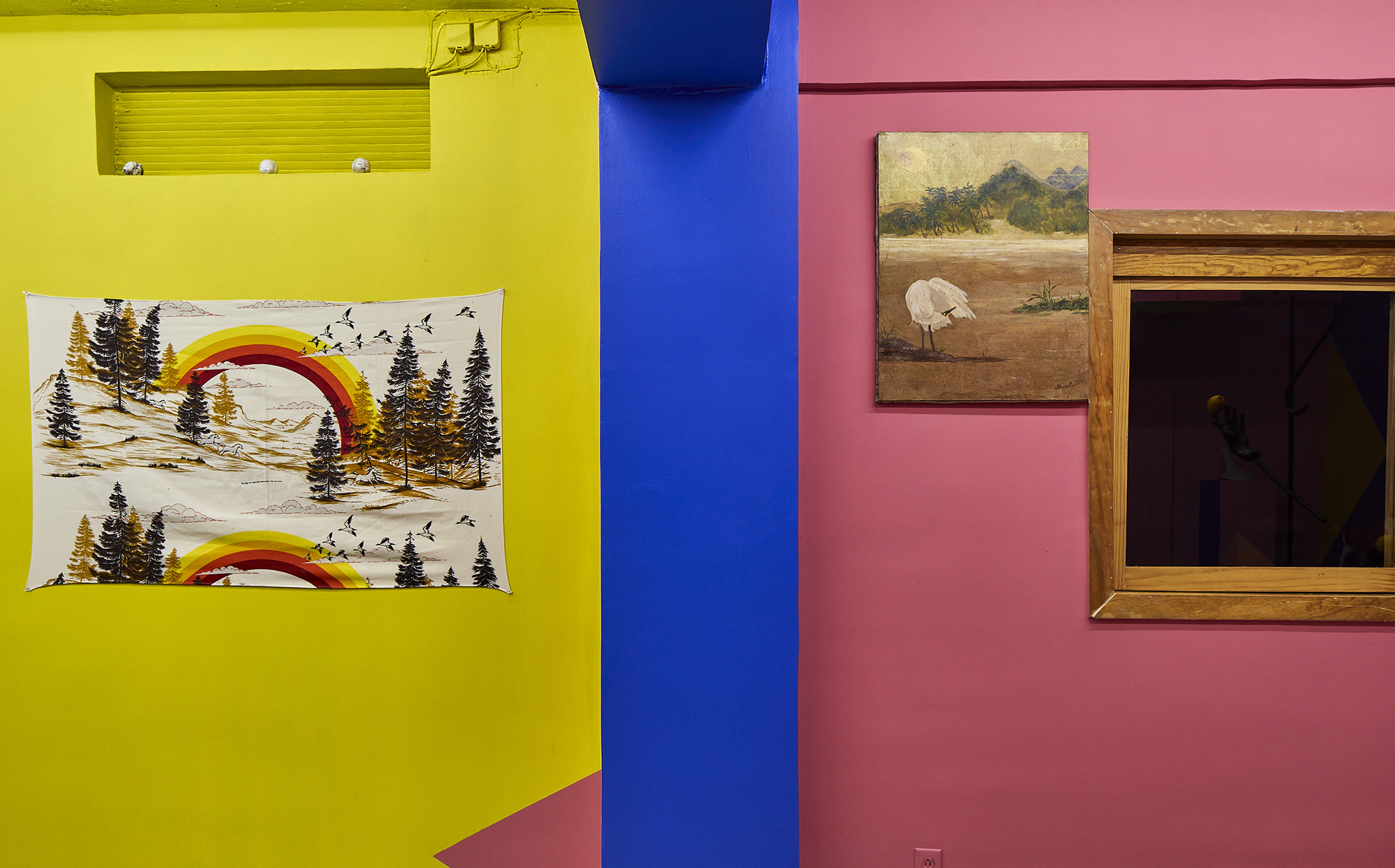
I realize that in writing this I have created my own monster, trying to create situations or intrigues where perhaps there are none. Even so, I wanted to sing with the others, and to sing who knows what.
The exhibition will be open until April 3. Schedule your appointment in advance.
Translated to English by Byron Davies
*1: This paragraph’s phrases in italics refer to: ABLAR HA DEFESIOS, HABLAR ADEFESIOS, DEFESIOS ABLAR. MP4 file courtesy of Pequod & Co.
Published on February 27 2021